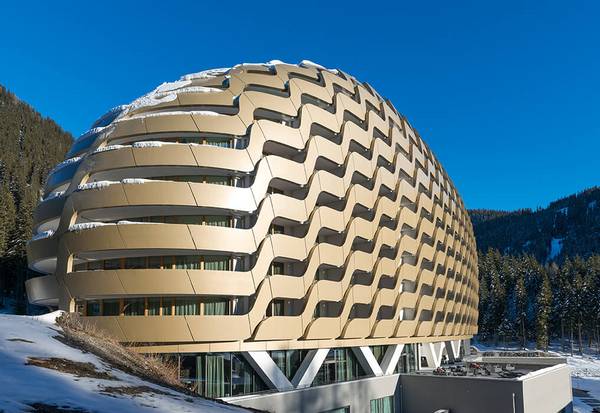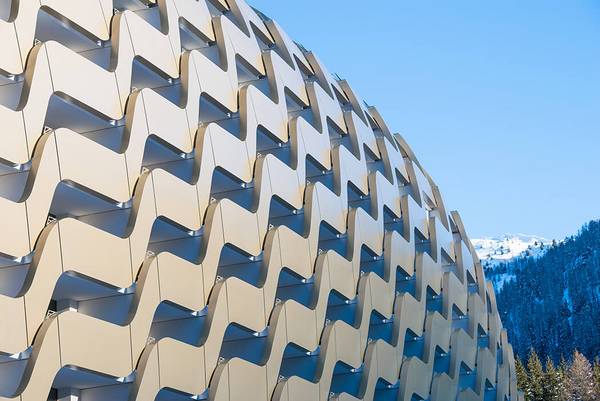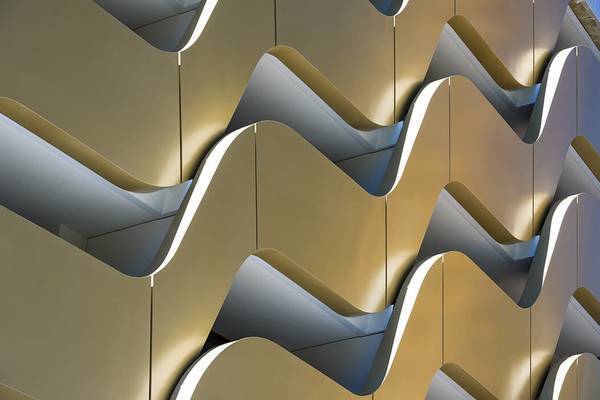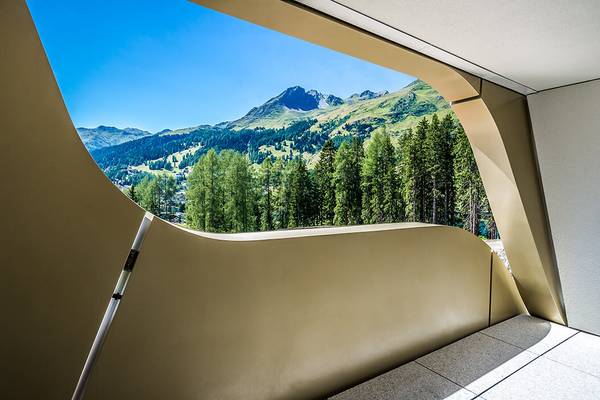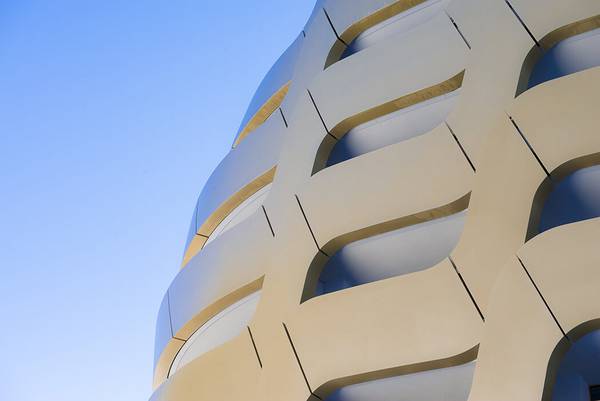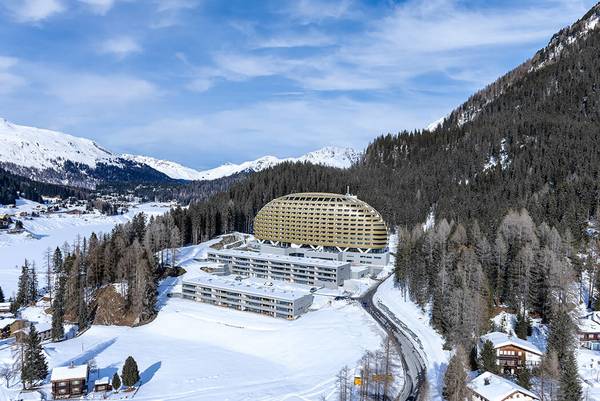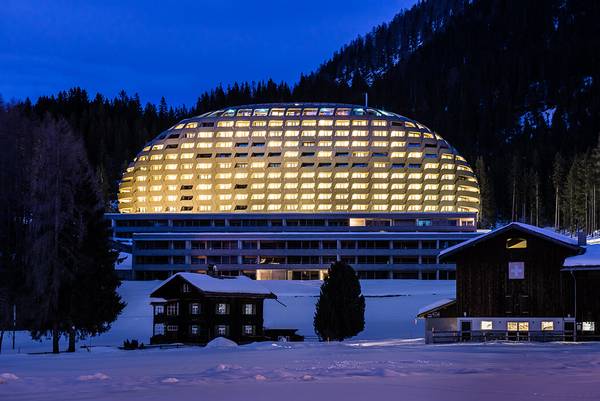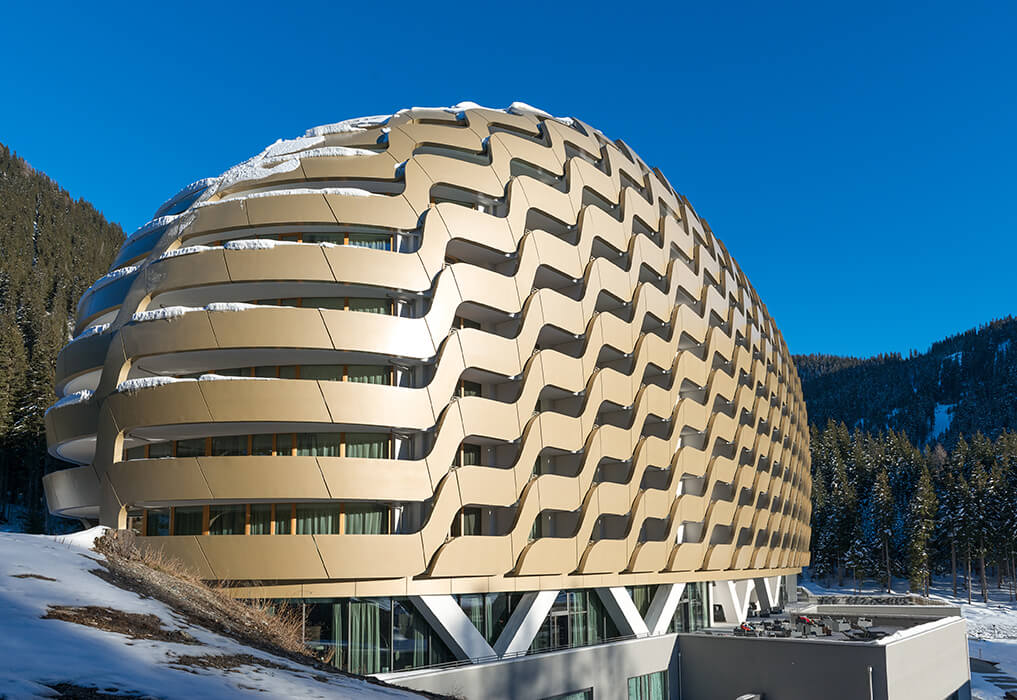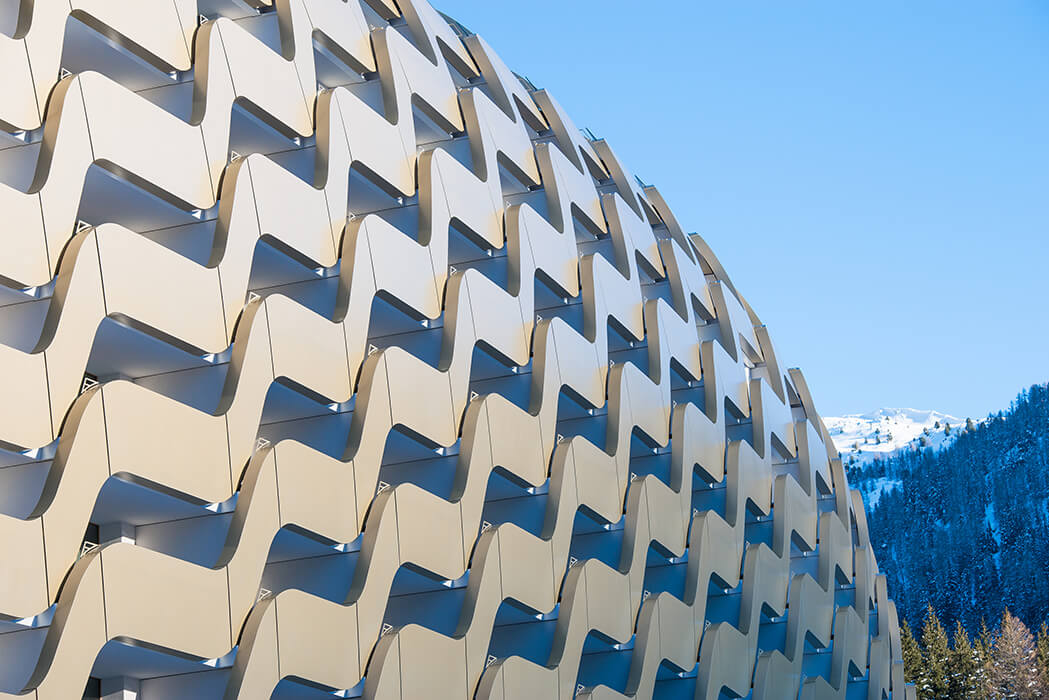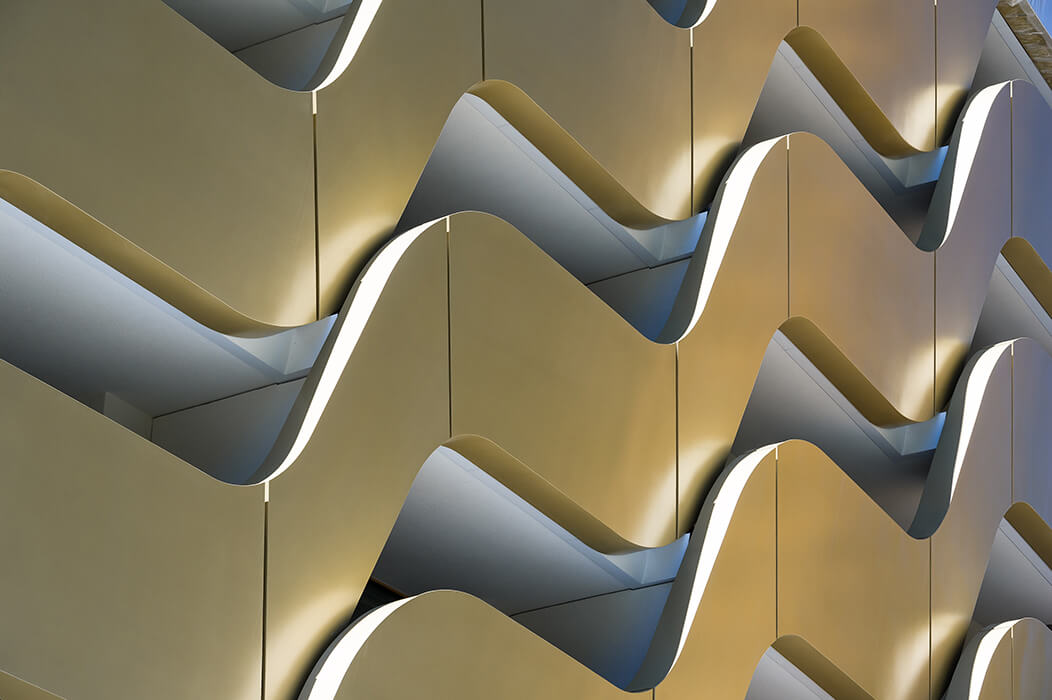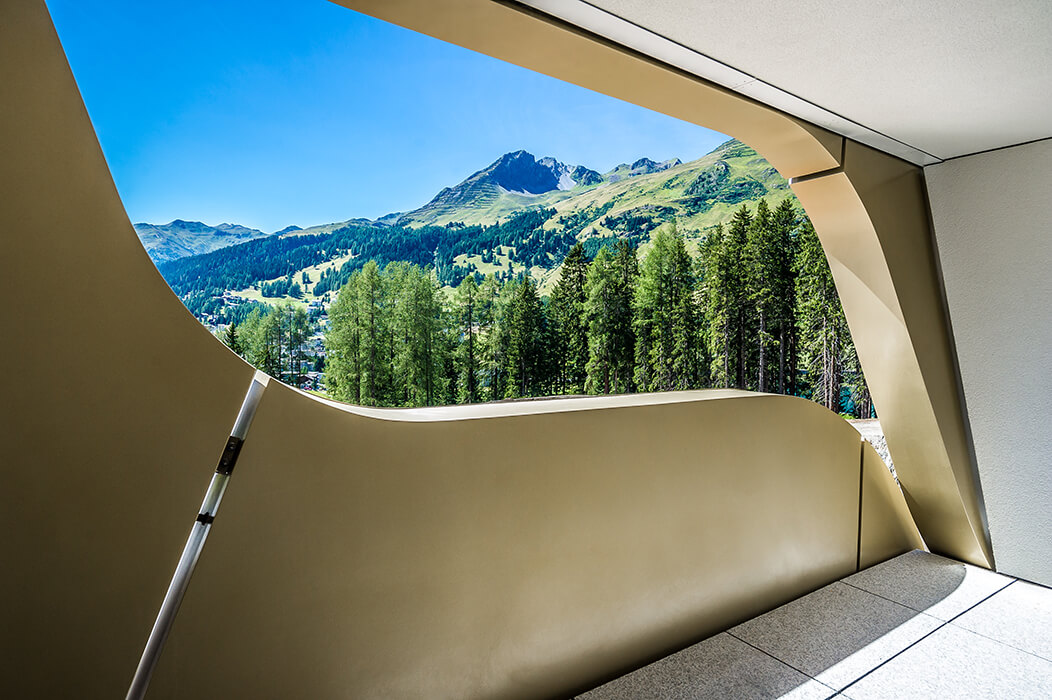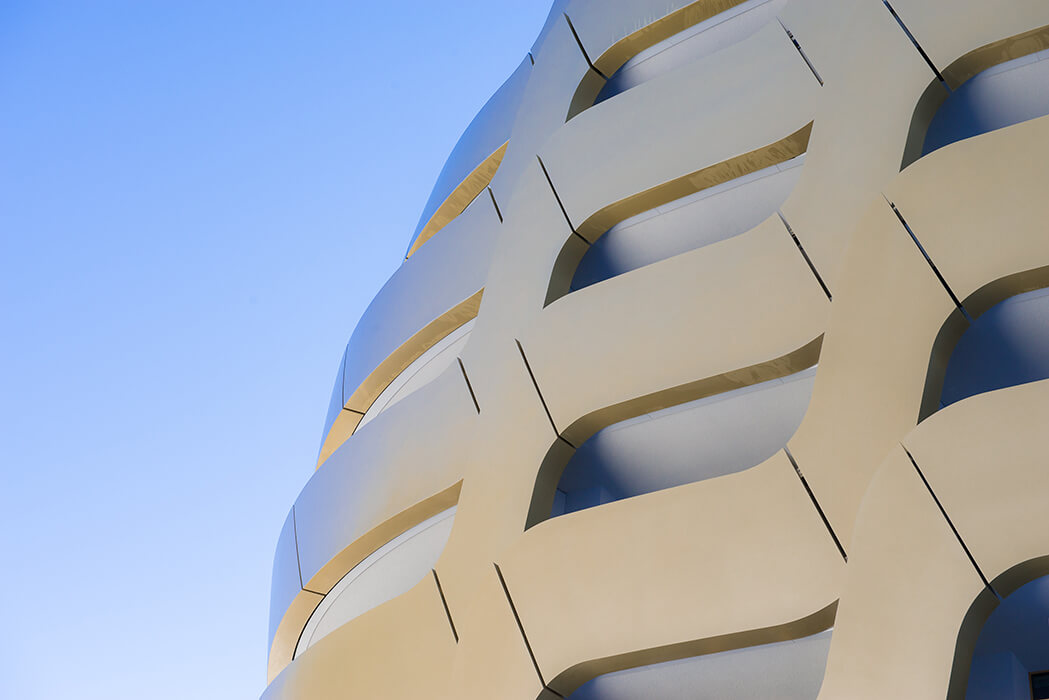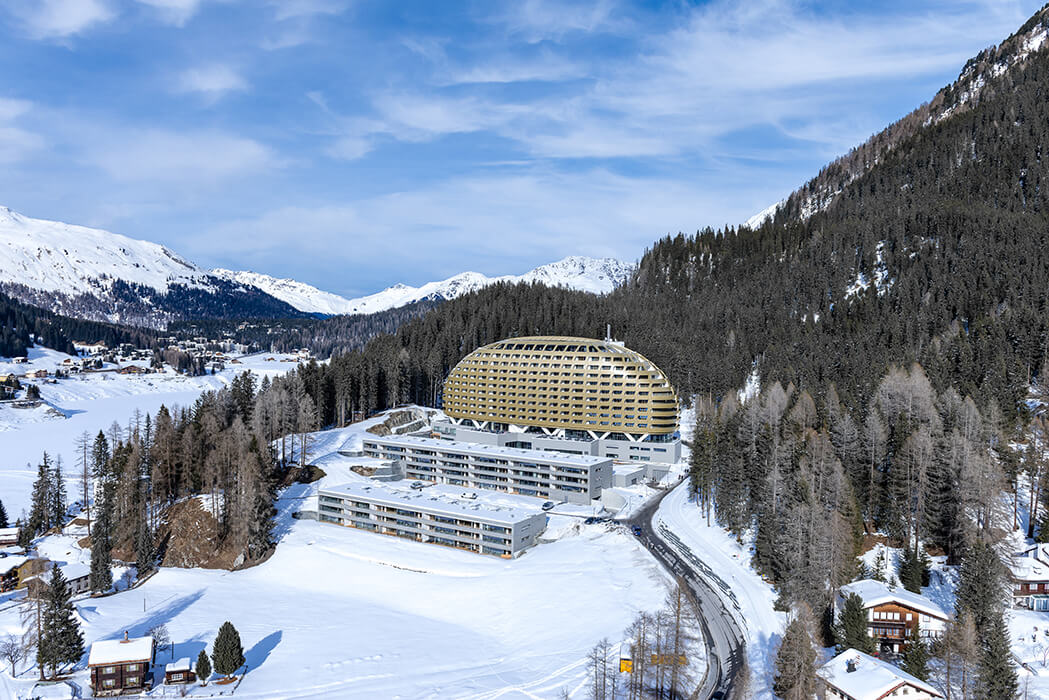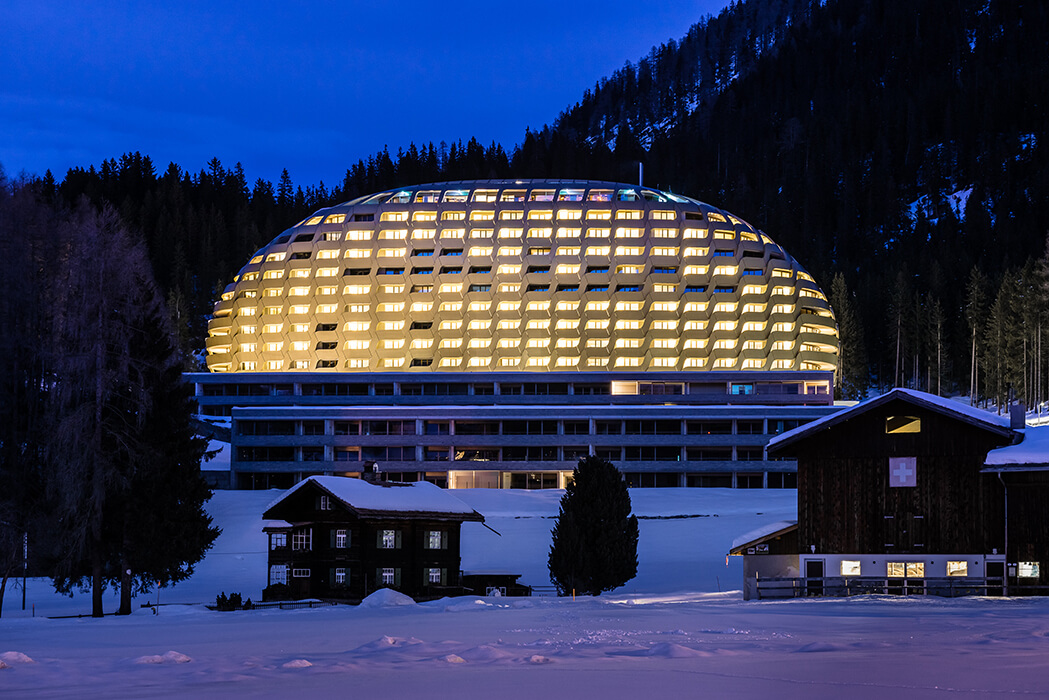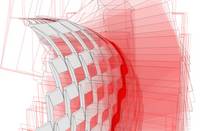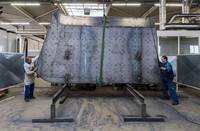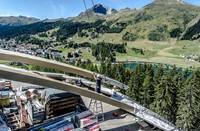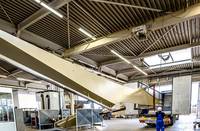The high degree of prefabrication and the precise logistics, which included a computer-based erection simulation, ensured optimum procedures on site as well as extremely fast erection for a building of this size and complexity. All the façade elements, including the roof dome, were erected in just six months.
Reference overview and Header image: © seele/René Müller
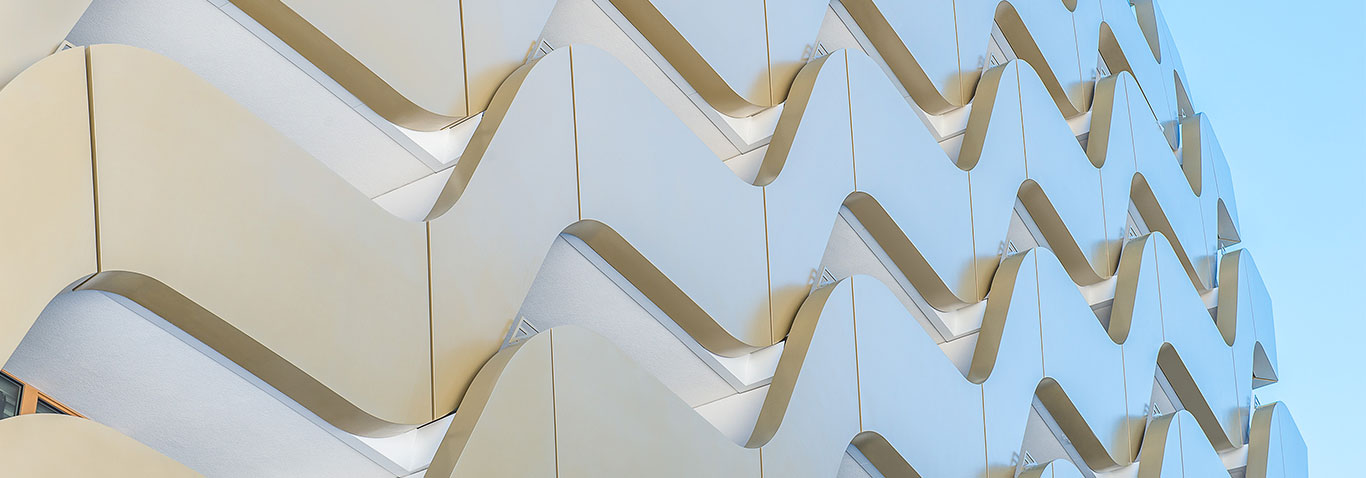
820t
steel
28,000m
weld seams
45,000sqm
sprayed area
3mm
tolerance
62,000
individual components
hotel intercontinental davos – elegant 3D waves in steel
Designed by the Munich-based architectural practice Oikios, the main building of the InterContinental Davos Hotel has become an unmistakable new landmark due to its oval form and a metal façade that almost seems to be flowing. The incisive curves of the external envelope allow the building to merge into its surroundings and at the same time diminish the apparent size. Wavy façade elements that wrap themselves tightly around a strictly orthogonal core structure.
Every one of the 791 spandrel panel elements is unique. However, each has an identical, square, steel rib construction, so the elements could still be produced very economically according to a modular system. In terms of the manufacturing precision, the individual elements (in standard sizes of about 1.6m x 4.5m and special sizes up to 14.6m long) are comparable with pieces of furniture – and were handled with similar care. Every façade element had its own bespoke transport frame so that it could be safely transported to Davos by road from the production plant in Plzeň in the Czech Republic.
The “unbuildable façade” is built
At first it seemed that a building envelope with such delicately shaped elements and constantly changing curves would only be possible in aluminium, if at all. Façade specialist seele proposed an alternative solution with steel elements – a combination of steel rib shells as the load-bearing internal framework with elastically supported thin steel sheets to ensure a high-quality finish for the external skin. High quality standards, budgetary requirements, buildability and the need to control thermal expansion resulted in the use of steel. This form of construction allowed the geometry to be implemented as originally intended, with high precision, minimal tolerances and the smooth surfaces of the architect’s design. The internal supporting frame for each façade element is made up of laser-cut primary and secondary rib.
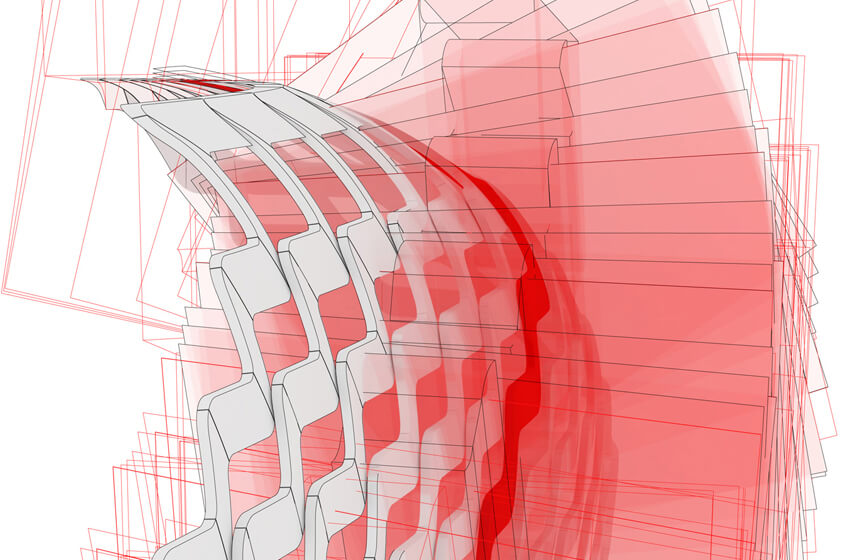
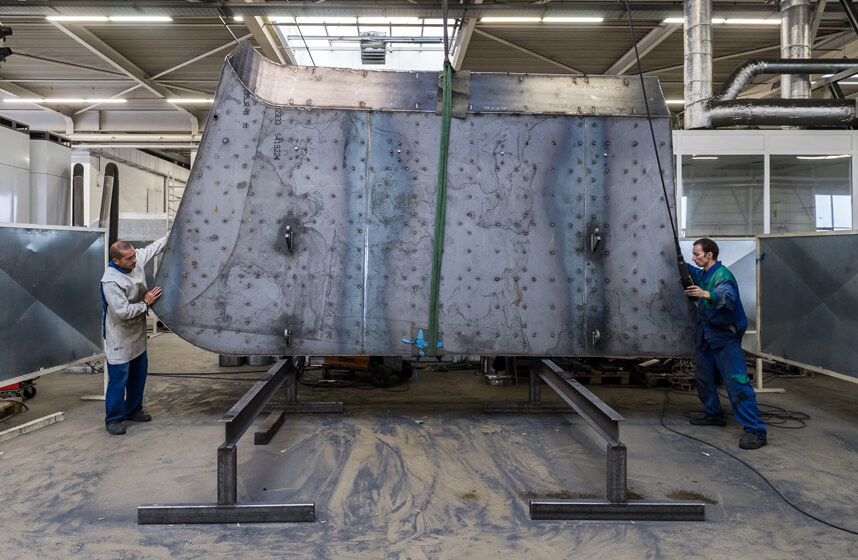
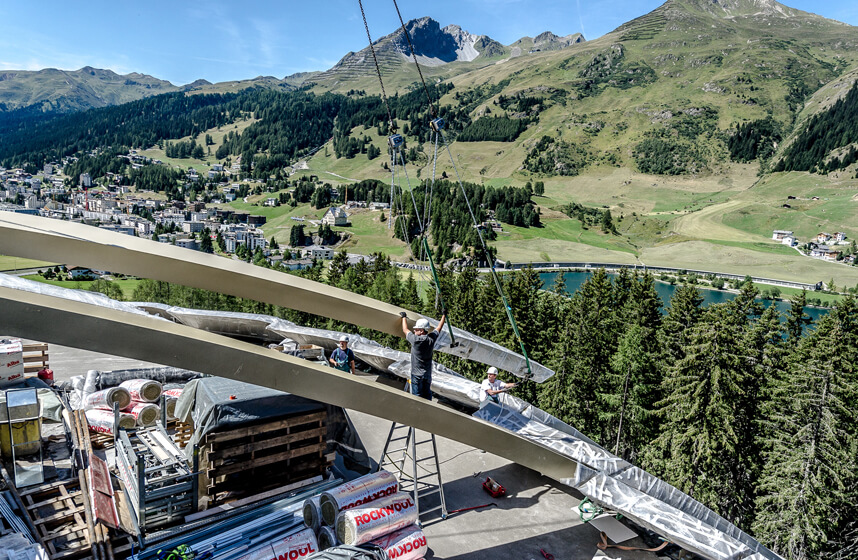
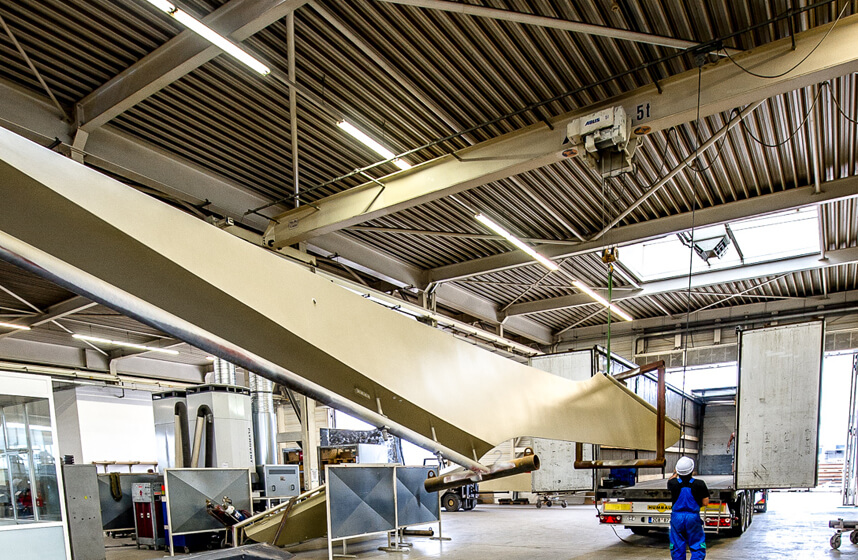
Credits
| Client | Credit Suisse AG |
| Main contractor | ARGE Baulink/Toneatti AG |
| Architect | Oikios GmbH |
| Engineer | Wilhelm + Partner, Stuttgart (DE) |
| Date of completion | 2013 |
| Scope of work by seele |
Development, design, fabrication and erection of
|
